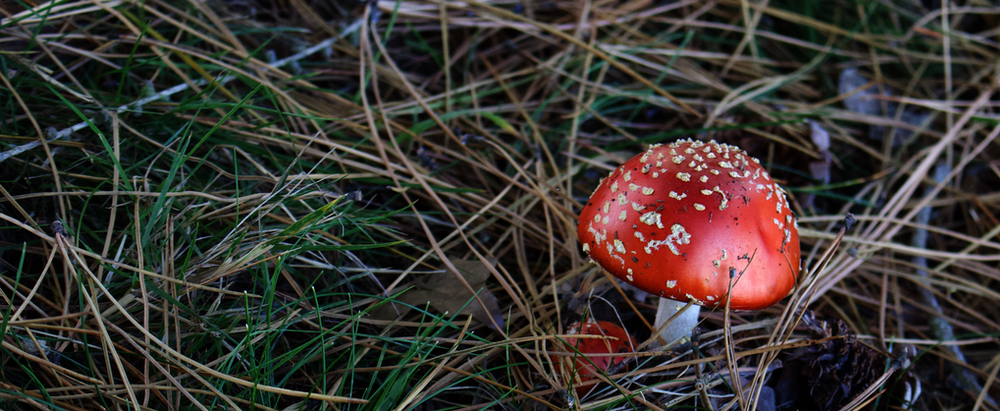
Growing and Harvesting European Linen for the 2023-2024 Season
Hello friends,
As a crafter and a gardener, I like to combine my hobbies in interesting ways. In this case it was growing and harvesting European flax (Linum usitatissimum) in order to prepare some linen for spinning and weaving.
Back when we lived in Wellington I bought some Essene European flax seed (Linum usitatissimum) from Koanga Gardens. In the first year I sowed half the seed packet into a 1 m x 2 m space, and grew the linen plants mainly for producing seeds, so in years afterward I could grow even more flax for linen. My linen harvests thereafter would be self-sustaining. I now grow linen every couple of years for collecting seeds, and stockpiling flax stalks for making linen.
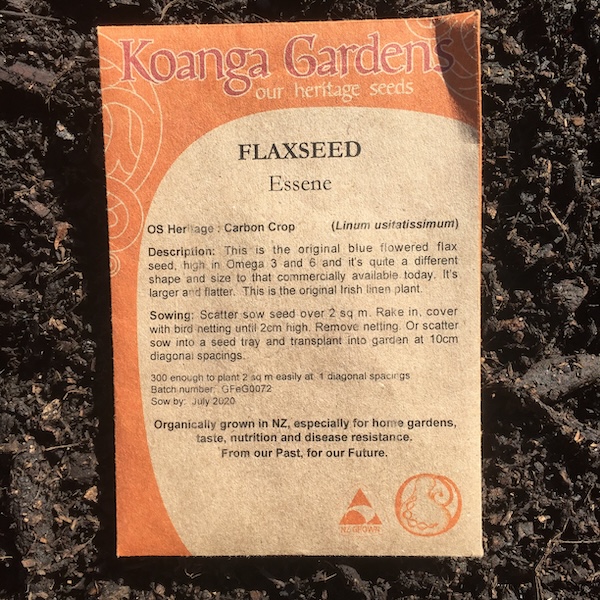
This blog post is showing the process of growing linen from seed sowing to harvesting. In later blog posts I'll share as I go through the flax processing and then spinning and weaving it.
The first thing I did was buy the book "Homegrown Linen: Transforming flax seed into Fiber." by Raven Ranson. This book is very detailed, and shows all the necessary steps in growing homegrown flax for linen. I then used it to calculate how to grow it in New Zealand seasons.
The first step in growing flax seed is deciding when to sow the seed. Flax seed is sown in spring when oats and barley are sown, and in our case it was in mid-October. If flax is grown for linen then the seeds are grown very close together so that long tall stalks are produced, but if flax are grown for seeds, they are planted further apart to allow for branching and more flower production.
After weeding the patch of ground it was to go into in spring last year, I fertilized it with a high nitrogen fertilizer in the form of sheep pellets, and then prepared the soil to a fine tilth. I then sowed the flax seed in a broadcast fashion very close together, so that the linen plants would grow very tall, with little to no branching. After covering the seeds over with a fine layer of soil using a rake, I watered the seeds in, and then covered the crop with bird netting to protect the seeds from the local very hungry avians. It takes approximately 100 days from seed sowing until plant harvest, so this was classed as day 0.
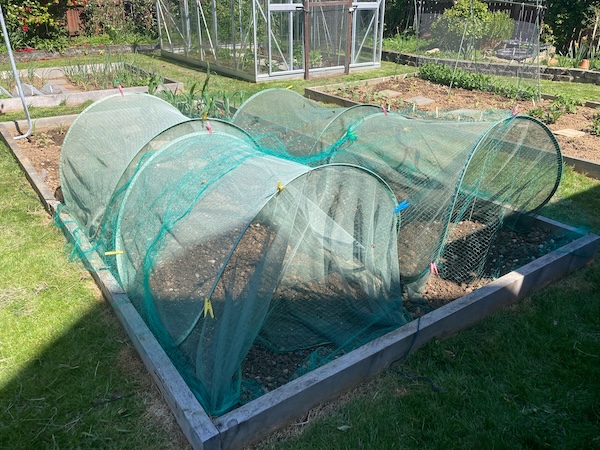
Within a few days of watering each day, the flax seedlings began to appear. It is always very exciting to see them come up.
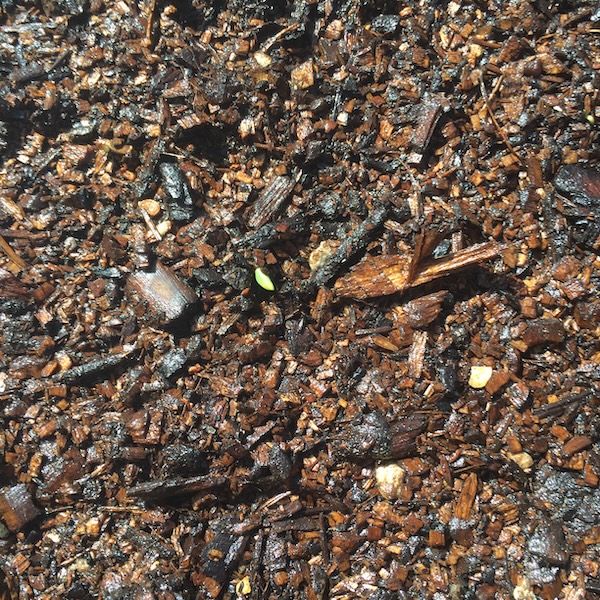
And within a week, the seedlings were actively reaching for the sky. In the photo below I was growing the linen plants for seed, but as you can see, I spread them a little too far apart.
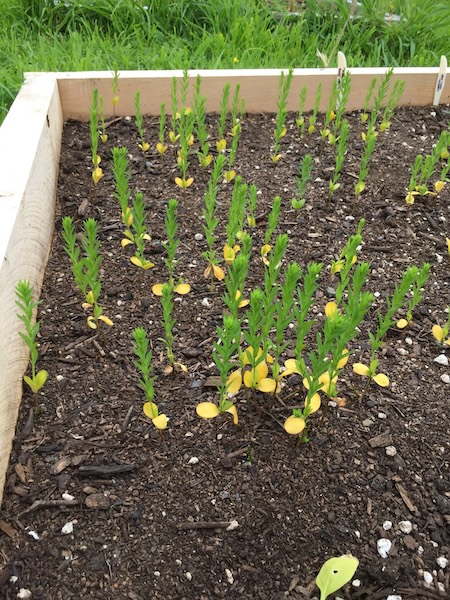
Once the flax starts growing, it basically fends for itself. If sown very close together no weeds will grow, making it an easy crop to take care of, as long as it gets enough water. And once the flax reaches about 50 cm tall, it begins flowering at around day 60. The beautiful blue flowers open during the day, and close again at night. And now that the plants are tall, they sway very prettily in the breeze.
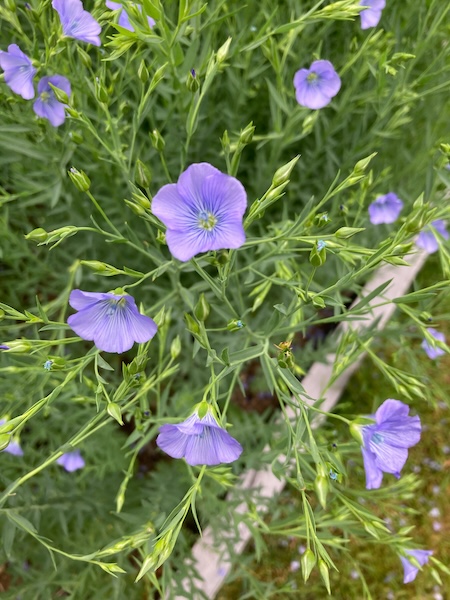
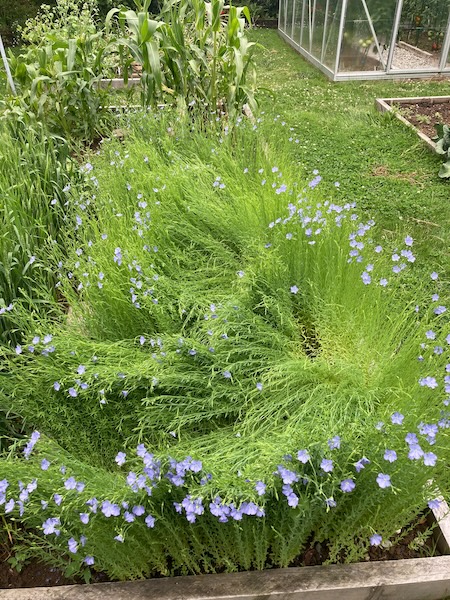
Flowering and setting seed boils takes around a month. One of our neighbourhood cats, who we call Patches, decided to make their snoozing spot inside the linen crop. No matter how many times I tried to shoo them away, they kept coming back, so I let them be. It's a good thing they're cute because they ended up squishing a bunch of linen...
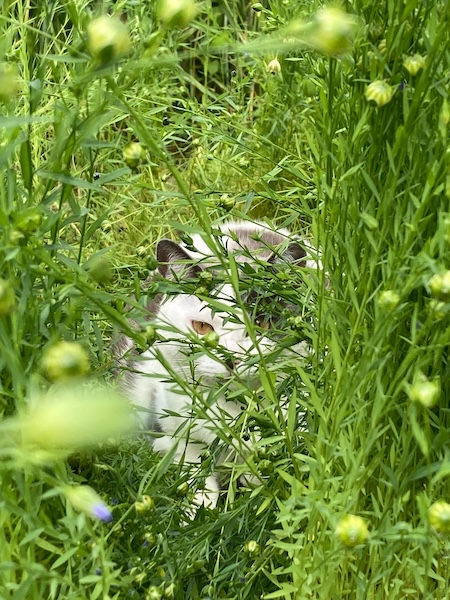
Once the seed heads (boils) have set, now is the time to think about when to harvest. It's a good idea to set aside a section of your crop to let the boils (seed heads) mature and turn brown, which means they are then ready to harvest for next years seeds. Their plant parts will be dry and thick and yellow, and they won't make good linen.
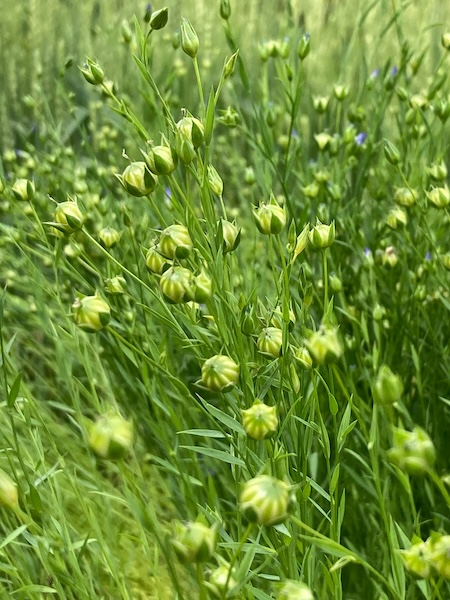
The rest of your crop will be used for producing linen. When the bottom half the plant has turned golden, it is time to harvest the plants. The seed heads will not usually be viable for collecting seed, but I've found in the past that some of them can be.
The best way to harvest linen is to pull them out by hand in clumps. Lay the harvested linen plants out on the grass, all facing the same way, with the roots at one end, and the boils at the other. Once you've harvested all the linen plants, it's time to stook the plants, which means creating bunches of sheafs, and then tying them in the middle like the poles of a teepee. You want air to get up into the middle of the sheaf to dry it out. Place the sheafs upright with the roots at the bottom and let them dry in the sun on sunny days.
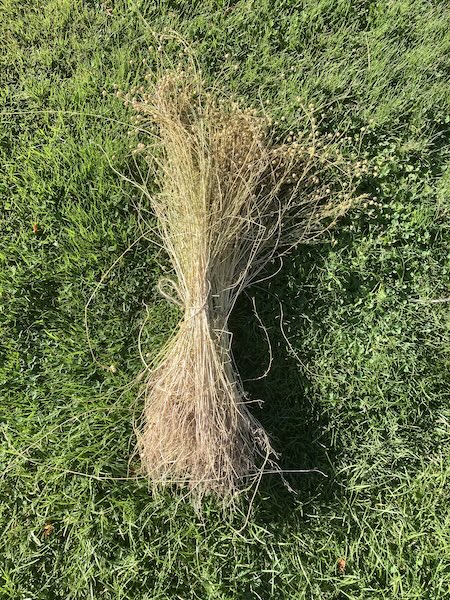
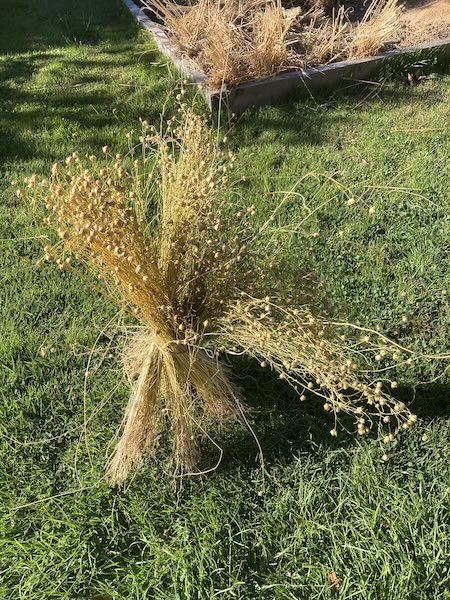
Once the linen plant sheafs are dry you can store them until you want to begin processing your linen. The next step is processing my current linen crop, and this will occur in a couple of weeks after autumn starts...
Have you ever tried experimental gardening? I've done this in the past with growing wheat, and it's very interesting to see how food and fibers are processed. It makes you appreciate how complicated food and textile production is.
Have a wonderful day
Julie-Ann
Want to discuss my post? Feel free to chat with me on Instagram or Mastodon or Bluesky
The Winter Citrus Gardening Project is Finished
Hello friends,
My winter citrus gardening project is finally completed. A couple of weeks ago, I dragged the citrus trees out of the glasshouse, and gave them each a trip on the wheel barrow out onto the patio. The next task was digging three very big wholes into the ground to make space for the citrus trees.
The first tree to go in was the lime tree. It only took a couple of bangs on the outside of the pot, and it loosened up enough for hubby and I together to lift the heavy plant into place.
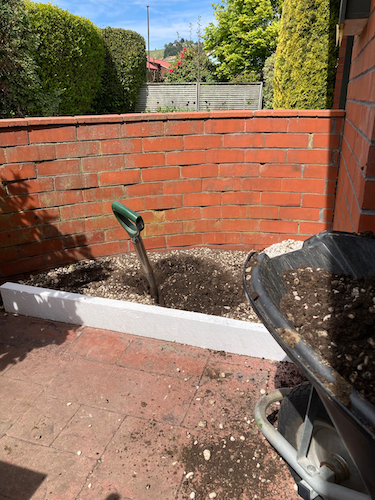
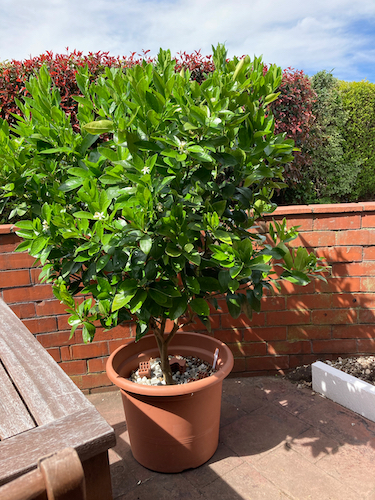
Then it was just a task of filling in the hole, sprinkling both citrus fertilizer and water retention crystals onto the soil, and then watering the lime tree in.
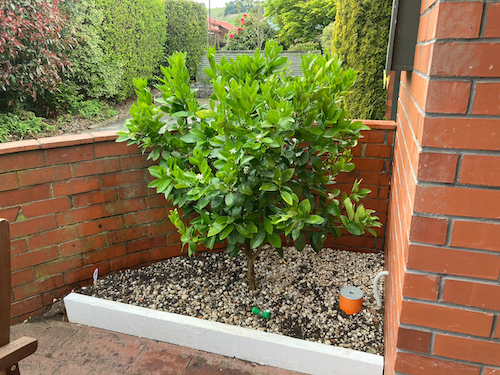
Next up on the list was to do the same to the lemon tree, which is now sitting quite happily underneath the kitchen window in the herb garden.
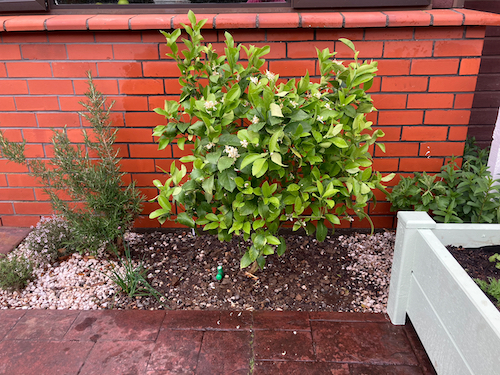
And last of all was the mandarin tree, which is now sitting in front of the newly painted white fence in the front garden. If you've noticed the three green pegs in the ground, they're soil water monitoring sensors, which I can keep an eye on to see how much water each plant is getting. The pegs are connected to our weather station system, and I can check them online whenever I want.
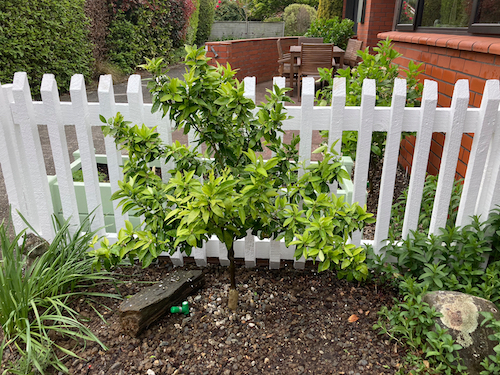
I've repurposed the now empty large pots, and they're now housing three of our tomato plants, a yellow Honey Bee plant, a Pomodoro plant, and a Juane Flamme plant.
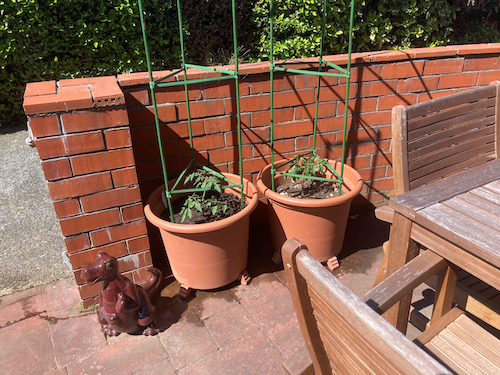

And last of all the planter box has been painted a pretty shade of sage green, and it is now full of annual herb plants.
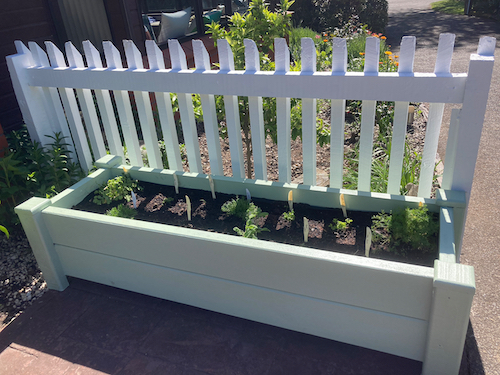
I'm really happy with how this garden project has turned out. Now all I need to do is paint our patio garden furniture sage green, and then the whole area is spruced up. Over the summer I need to come up with a plan to protect the citrus from frosts and snow over winter, but for now I can just enjoy the fruits of my labour.
Have a wonderful day
Julie-Ann
Want to discuss my post? Feel free to chat with me on Instagram or Mastodon.
Winter Citrus Garden Project Part 2
Hello friends,
Recently I told you about my winter citrus garden project. At that time I had cleaned up all the areas the citrus plants are going to go into, and I had prepared the areas for painting. Over the last month I have painted the board white in front of where the lime tree will go.
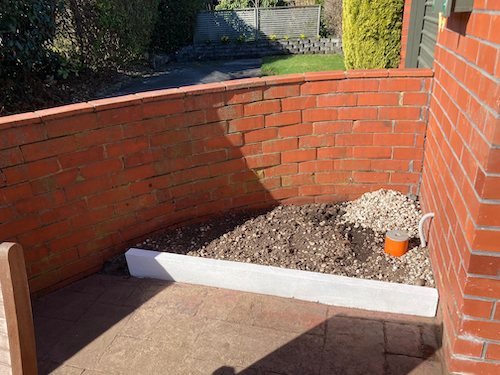
I also spent time water blasting, prepping, and then painting the fence in front of the patio white as well, it looks quite good when it has plants like these daffodils in front of it. The other bonus of the fence now being white is that it's much easier to see when driving down the driveway, and it'll be far less likely for courier drivers to nearly hit it whenever they drop off courier packages because they failed to see it...
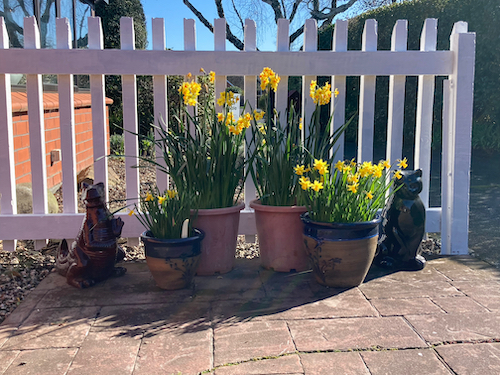
The other thing we did was to go to our local garden center and order a planter box for in front of the fence on the patio side. When the lemon tree goes into the herb garden on the left in the next couple of weeks, we lose much needed herb garden space, so this planter box will fill a much needed void. I plan to grow annual herbs in this box.
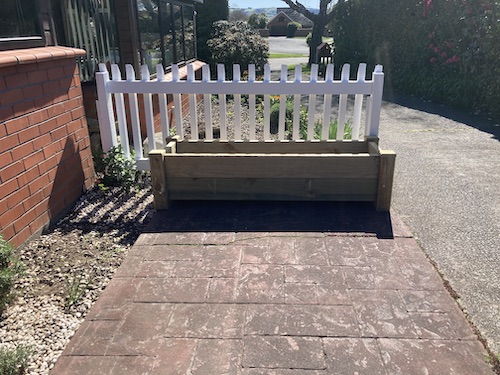
Until I get a chance to paint the planter box, Miss Luna cat from next door has taken to sitting inside it. It's less than a week now until Luna and her family move houses, and we won't get to see her anymore. I'm quite sad about this, she likes to follow me around in the garden, and has been a good kitty friend over the years.
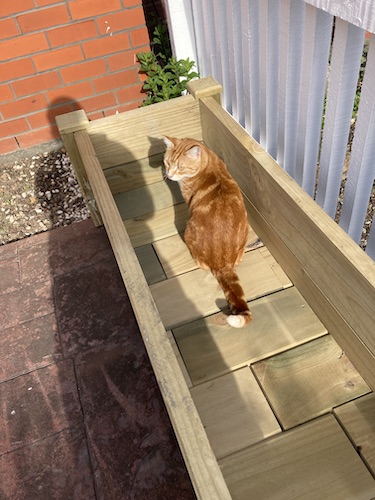
Hopefully by the time you next see this project, it will be finished. The lemon, lime, and mandarin bushes will be in the ground, and the planter box will have been painted, filled with potting mix, and have herbs inside.
Have a wonderful day
Julie-Ann
Want to discuss my post? Feel free to chat with me on Instagram or Mastodon.
Transplanting my Blueberry Plants
Hello friends,
When we moved from Wellington back to Dunedin in October 2019, our new home came with a large outdoor aviary. At first I really wasn't sure what to do with it, but after a couple of weeks I came up with a perfect idea—if birds couldn't get out of the bird cage, then that meant that birds also couldn't get in. It would make a great berry cage to protect all the precious strawberries, raspberries and blueberries I wanted to grow in the garden.
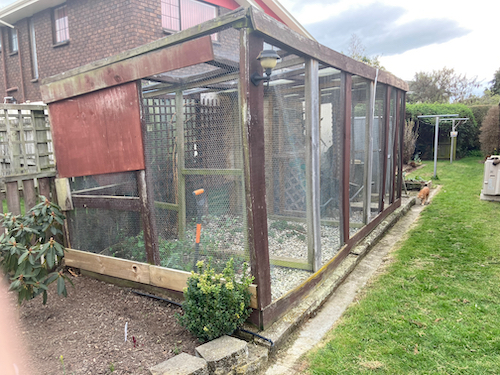
Over the next couple of months I removed all the nesting boxes and bird related stuff, and began turning it into a berry cage by making sure that light and rain could get in. When all that was completed, I then planted a raspberry bush, multiple strawberry plants, and three varieties of blueberries. All these plants have grown very well in the last three years thanks to the previous inhabitants droppings, and it has now come to the point that the blueberries have outgrown the small space that I gave them in the berry cage to live.
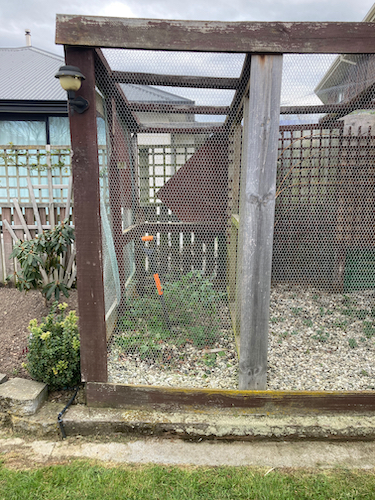
So this meant that I had to find somewhere else to grow them in the garden. There is a section of the garden down near the clothes line that already had a gooseberry bush, a giant blackcurrant bush, rhubarb, and a dwarf apricot tree I planted last year. I had began clearing up all the overgrown weeds in that section of the garden last autumn, but after my sinus operation that all came to a halt.
By the time I got back around to tidying that section of the garden this month, the weeds had all returned in a vengeance. Hubby has helped me tackle this area over the last couple of weeks, and last weekend he dug four holes for me, three for the blueberry bushes, and one for the tea plant I had ordered online, but hadn't arrived yet.
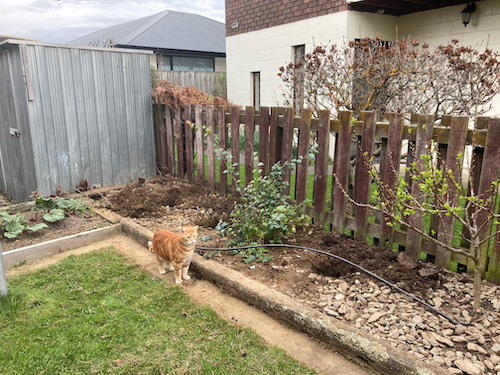
As you can see from the above photo, Luna, our neighbour's cat came and helped me with the transplanting. She is a very good girl, who I will miss very much, as her owners have just sold their house, and Luna will soon be living elsewhere. I think she mainly helped because I have catnip growing in the berry cage, and she wanted to partake in its benefits...
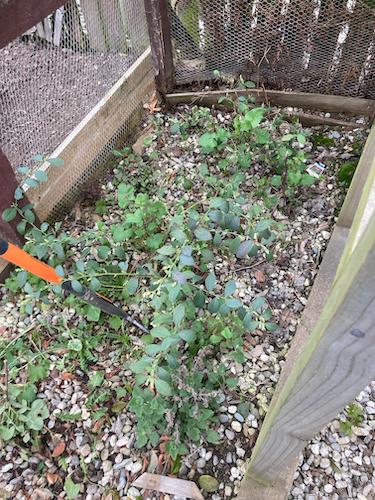
It didn't take long to transplant the blueberries, and they have bounced back quite quick, which is great. I have also transplanted some natural dye plants I had growing in the vege garden, into this garden space as well. I am growing St Johns Wort, Woad, Madder, Tormentil, and Lemon Sorrel to hopefully dye with later on in the growing season.
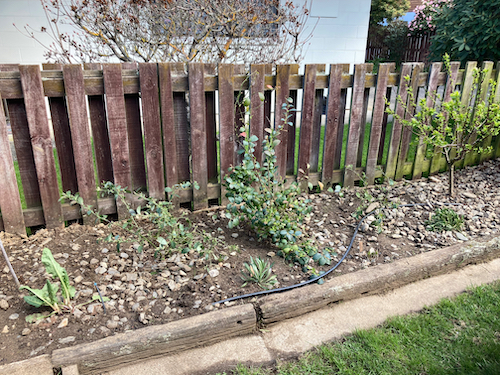
I know that I will now have to net my blueberries from the birds, but I will deal with that closer to the time. I hope that very soon my blueberry bushes will provide me with lots of delicious blueberries to eat and put in smoothies over the coming summer.
Have a wonderful day
Julie-Ann
Want to discuss my post? Feel free to chat with me on Instagram or Mastodon.
Winter Citrus Garden Project Part 1
Hello friends,
I'm in the middle of working on my Winter Citrus Garden Project, so that I can put my lemon, lime and mandarin plants into the ground this coming spring. They are too big for their pots, and need their own space to expand into in the garden. Of course this means that from next autumn and winter I will need to protect them from frosts and snow while living outside, but I've figured that this a problem for future me to sort out...
For the past couple of months I've been planning, and then preparing three areas of the garden for the citrus plants will move into. My citrus plants currently spend spring, summer, and the first part of autumn sitting on the patio, which pretty much gets all day sun. I love the way the plants look in our brick patio, especially when they're in flower and fruiting, it makes the area feel very Mediterranean, so I decided that the plants had to go into the ground near this space.
The mandarin tree is quite wide, so it will be going into the position previously held by the rhododendron bush behind the fence as shown in this photo.
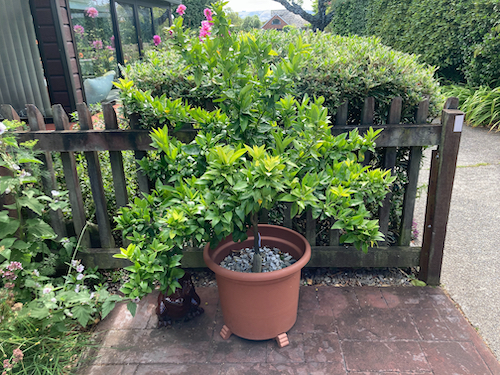
So far over the winter, hubby and I have chopped down the rhododendron behind the fence, and more recently I've water blasted the fence for painting. I don't particularly like rhododendron plants, the main reason being that rhododendron nectar is actually poisonous to Tui, and can kill them, which is why I didn't mind getting rid of it. My plan here is to paint the fence white, not only will the fence and mandarin provide a pop of colour in the garden, but it will also make the fence easier to see in the dark while driving down the driveway...
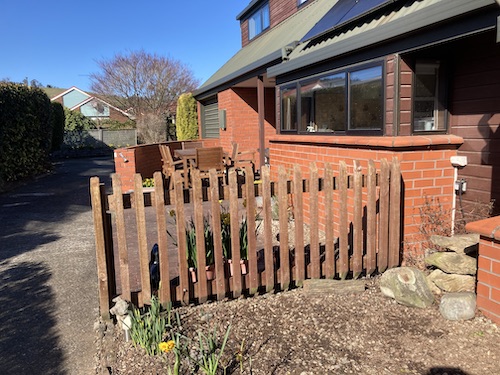
The next area to prepare, is for the lemon tree. As seen in this photo, the lemon tree is small and round, and it will be moving sideways as seen in this photo, into the herb garden bed under our kitchen window.
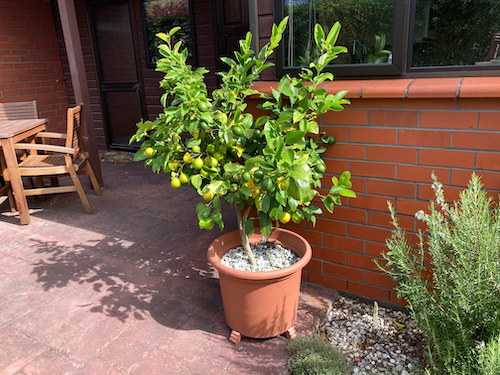
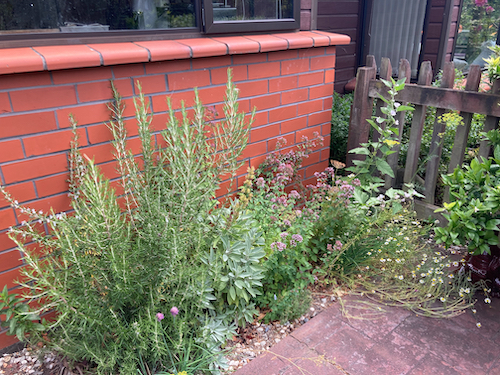
Last week I tidied up the herb garden for the winter, and left the thyme and rosemary plants to stay where they currently are (after giving them a big hair cut). The lemon tree will sit in the middle of the herb garden as seen in the photo below, and the mint and saffron plants will sit on the right.
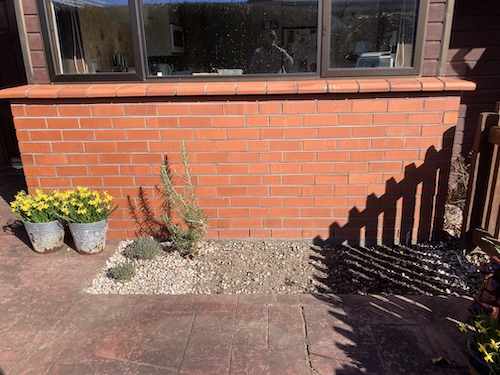
The last area to prepare is for our lime bush. It is much more bushy and bigger than the lemon bush, and it will be going into the spot where the small Japanese maple tree used to be.
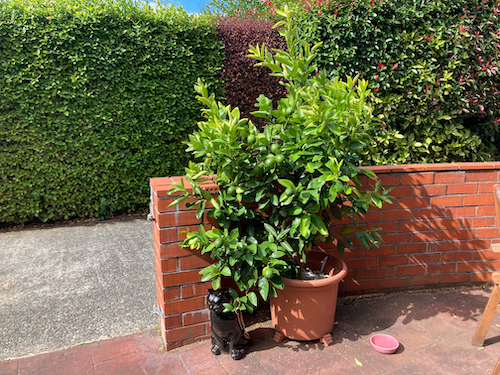
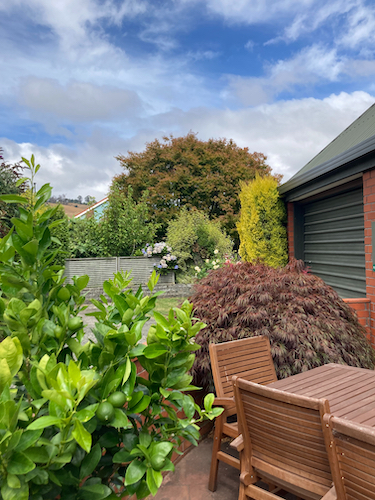
We really loved the Japanese maple tree, that you can see in the photo above, but the previous owners put the tree in a bad spot in the patio. The base of its trunk was right up against the brick wall for the driveway, and as it got bigger, its roots and trunk started damaging both the fence and the patio. Half the tree also stuck out into the driveway, making driving out of the garage tricky at times.
Over the last couple of weeks we chopped the Japanese maple tree down, and then spent a lot of time digging up as much of the roots as possible, in order to ensure there would be space to put the lime bush into. This part of the project actually took way more work than I first envisioned, so I feel like I'm somewhat behind in the project at this stage.
The next step in this winter citrus gardening project is to paint both the fence, and also the board holding back the soil where the lime tree will go. And given that it's winter in Dunedin, and it's rare that the temperature will be above 10˚C long enough for paint to dry and cure, this step will only happen on a sunny day with a warm north westerly wind, no doubt. This may take weeks to happen, so in the mean time I'll continue to work on other garden projects.
What winter gardening projects are you up to? I'd be interested to find out.
Have a wonderful day
Julie-Ann
Want to discuss my post? Feel free to chat with me on Instagram or Mastodon.




